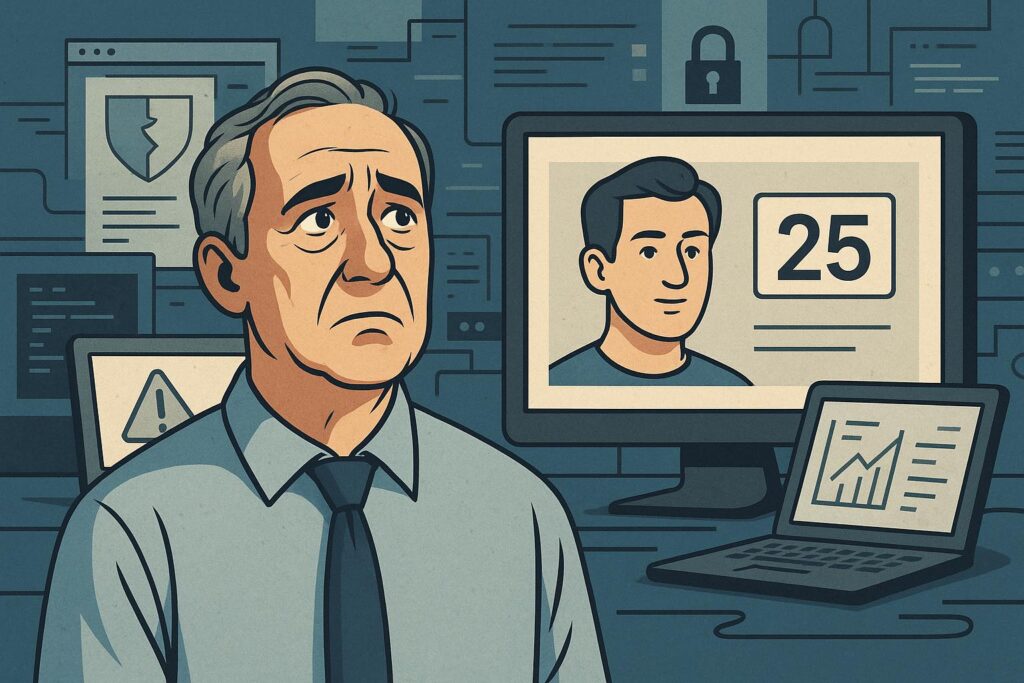The Silent Crisis of Digital Dependency: When Systems Know More Than We Do — Or Think They Do
In today’s digital-first world, it’s hard to imagine a process that doesn’t rely on some form of software or artificial intelligence going forward. From government records to customer service, banking to healthcare, our lives are increasingly mediated by systems we don’t fully understand — and that might be the biggest problem of all.
Walk into any modern corporate environment and try to solve a moderately complex issue. More often than not, you’re routed through a call center who, however polite and well-meaning, is entirely dependent on their systems. Your identity, your history, your account status — everything they know about you comes from what the system tells them.
But what if the system is wrong?
What if the data is corrupted, the logic flawed, or worse — hacked? What if the very software being used to help you is the thing causing the problem?
The implications go far beyond inconvenience. Imagine this: one day, you walk into a government office and are told by a cheerful public servant that, according to their records, you’re 25 years old — not 50. A clerical error? Perhaps. But in an age of increasing cyberattacks, it could just as easily be the result of a security breach. If critical systems like those at Home Affairs are hacked or manipulated, the version of you that exists in the digital world could suddenly become wildly inaccurate.

And in a world where digital identity is identity, that’s more than just an IT problem. It’s a life problem. Age, name, nationality, financial records — these are no longer just pieces of personal information; they are keys to healthcare access, voting rights, credit eligibility, legal protections. Get one of them wrong, and the consequences can be severe.
The Vanishing Understanding of “How It Works”
What makes this situation even more troubling is that fewer and fewer people actually understand the systems they use. In many organizations, even the people tasked with running the software don’t know what’s under the hood. They depend on outsourced applications, interfaces, pre-built tools, APIs, and scripts developed by teams they’ve never met, maintained on infrastructure they can’t touch. What we see happening is that solutions are built by AI nowadays.
This growing abstraction means that when something does go wrong, the first response isn’t “Let’s understand what happened” — it’s “Let’s raise a ticket.” Meanwhile, the real cause of the problem remains buried deep in a codebase nobody fully owns or comprehends.
AI Makes It Worse — Or At Least, Harder
Artificial Intelligence adds another layer of complexity. AI systems don’t just store information — they interpret it. They make judgments. They deny loans, flag fraud, screen job applicants. But AI models are notoriously opaque. They might be wrong, but understanding why they’re wrong is often incredibly difficult, even for the teams who built them.
So now we have systems we don’t fully understand, making decisions we can’t easily audit, impacting lives in ways we may not even be aware of.
Dependency Without Control
Our growing reliance on digital systems wouldn’t be so concerning if it was matched by a corresponding growth in digital literacy and systemic transparency. But that’s not what’s happening. Instead, we’re drifting toward a kind of digital feudalism — where only a few people understand how the systems work, and the rest of us just have to take their word for it.
We trust the software. We trust the AI. We trust the data — until something breaks. Then we realize just how fragile that trust really is.
A Call for Digital Literacy and Human Oversight
This isn’t a call to abandon software or AI, this article wouldn’t be written without AI — these tools have brought immense progress. But we must rebuild human oversight into digital processes. We need systems that are explainable, traceable, and auditable. We need people who understand the logic behind the interface — not just how to use the tool, but how it works.
Otherwise, we’re left in a world where we know less and less about what’s happening behind the curtain — while trusting it more and more with our lives.
And that should worry us all.
this article was inspired by AI, what I see happening in the world, what I see happening at customers who are focusing on cyber security. Watching series like black mirror, get to know Nearlink and so.
